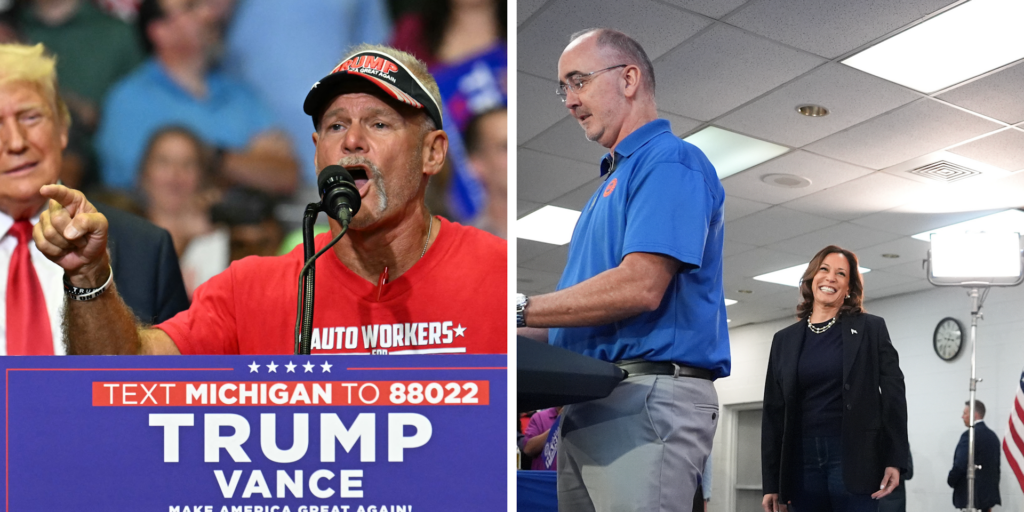2024 election
Trump and Harris Battle for Union Voters Amid Clashing Labor Records

As the 2024 presidential race intensifies, candidates Kamala Harris and Donald Trump are vying for the crucial support of voters in labor unions. With every voting bloc being significant, the backing of union members could tip the scales in this close contest.
Historically, union leaders have leaned toward Democratic candidates. However, the allegiance of rank-and-file union members has fluctuated over the past 45 years. In the 2016 election, for instance, union household voters supported Democratic nominee Hillary Clinton by a mere 8 percentage points over Trump, a notable decline from the 18-point gap in 2012, when Barack Obama was the candidate.
The challenge facing Democratic nominees has become evident, with no candidate since Ronald Reagan performing as poorly with union voters as the current Democratic ticket. Union members play a pivotal role in swing states like Michigan, Pennsylvania, and Nevada, where union affiliation exceeds the national average of 10%.
A recent New York Times/Siena College poll shows a tie between Biden and Trump at 47% among union voters. This is a significant drop for Biden, who had an 8-point advantage with these voters in the 2020 race.
Kamala Harris asserts the Biden administration recognizes the importance of labor.
Union members are increasingly evaluating candidates based on their stances toward workers’ rights and labor support. Many labor historians argue that Joe Biden’s administration, while not without flaws, has one of the strongest labor-friendly records since Franklin D. Roosevelt.
In contrast, Trump’s presidency is viewed critically by labor experts. For union members, three key issues are likely to influence their voting decisions.
First, federal workers have felt the impact of Trump’s administration with his 2018 executive orders that limited labor rights for around 950,000 federal workers affiliated with unions. The implementation of Schedule F in 2020 further eroded civil service protections. Conversely, Biden revoked these orders, leading to a significant increase in union membership among federal employees.
The second issue revolves around union elections, where rules established in the 1930s have faced scrutiny. Trump’s NLRB majority rolled back expedited election measures, while Biden’s appointees have reinstated more favorable conditions for union organizing.
Lastly, the Occupational Safety and Health Administration (OSHA) is a crucial concern for workers’ safety. During Trump’s term, inspections dwindled due to slow hiring of OSHA inspectors, which contributed to rising workplace incidents. In contrast, Biden has prioritized health and safety protocols, especially in response to the COVID-19 pandemic, introducing protective measures and seeking a budget increase for OSHA.
The candidates’ legislative histories further reflect their commitment to labor. Harris boasts a strong pro-labor voting record, achieving a 98% lifetime score from the AFL-CIO. Her running mate, Tim Walz, has enacted various worker-friendly measures as Minnesota’s governor. In stark opposition, JD Vance has received a 0% rating from the same organization, reflecting his lack of support for pro-labor initiatives.
Labor support could be decisive in determining the winner of the 2024 election.
Biden’s recent appearance on a Michigan picket line with United Auto Workers was a historic show of solidarity for labor unions. Trump’s response, which included a speech at a nonunion plant and comments praising Elon Musk for workplace dismissals related to unionization, may have alienated labor voters further.
The voting patterns of union households in the upcoming election remain uncertain. However, both campaigns recognize the importance of this demographic, recalling the tight races in 2020 and 2016, where union support played a critical role in the outcomes of Michigan, Wisconsin, and Pennsylvania.


















